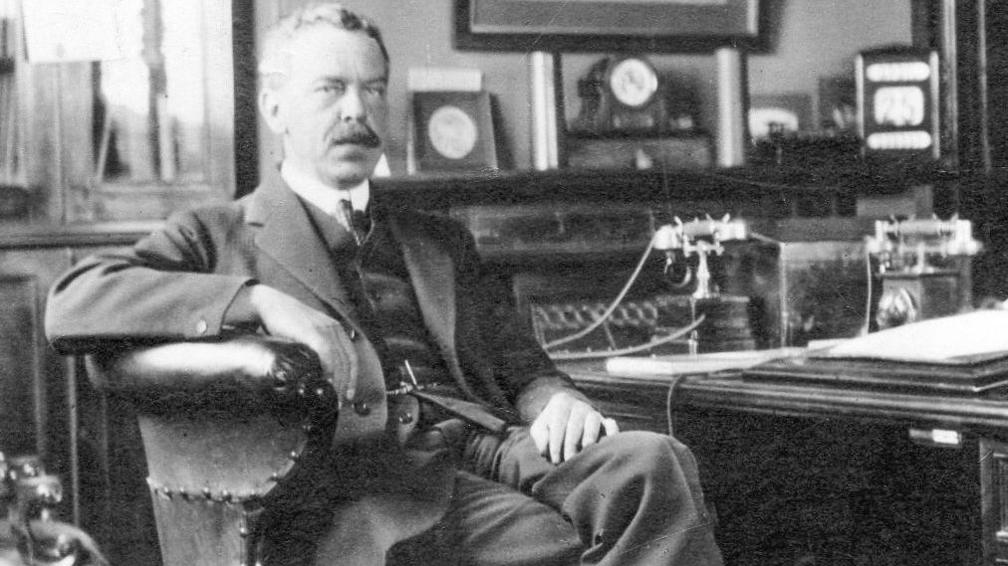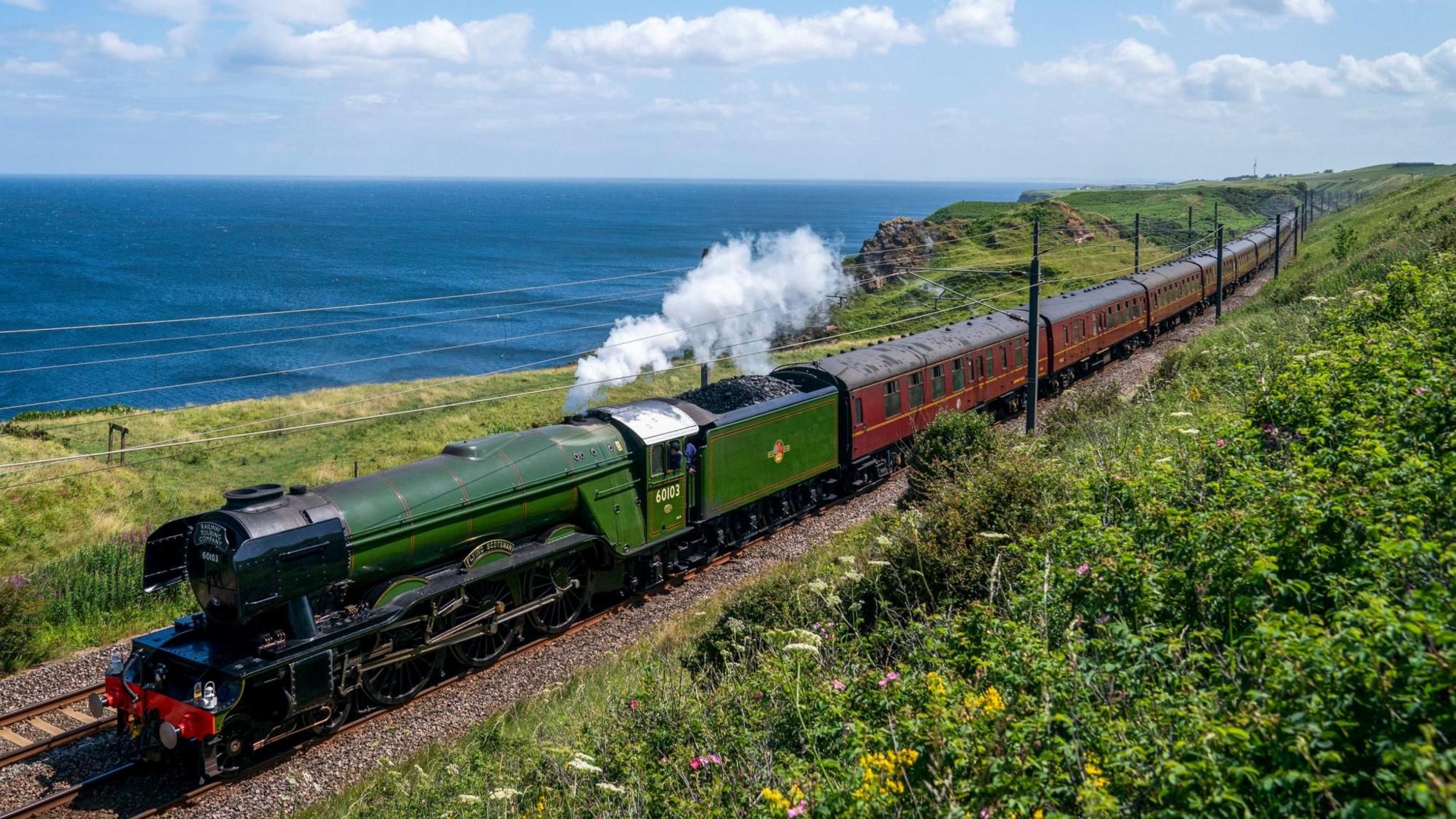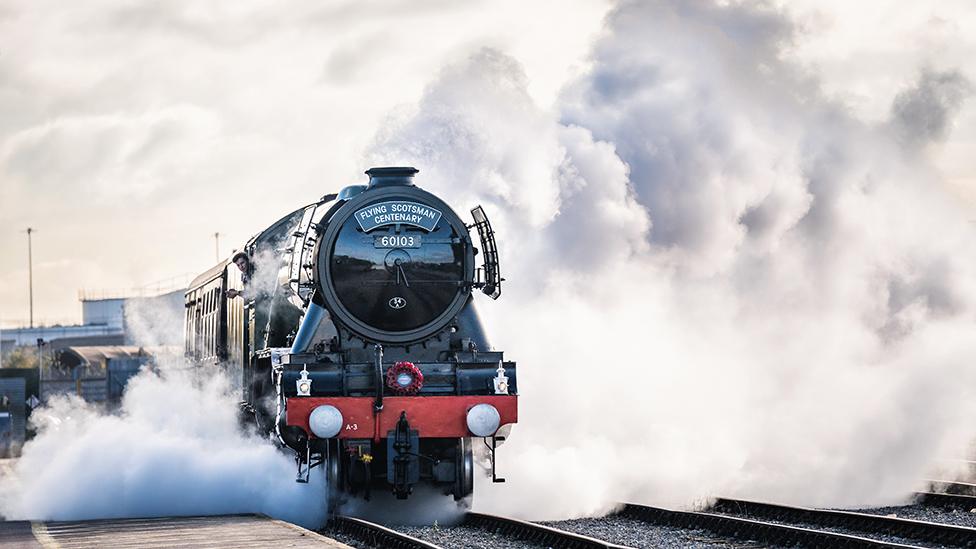Appeal for recording of famous steam loco engineer

Sir Nigel Gresley, pictured at his desk in Doncaster, designed Flying Scotsman and Mallard
- Published
Voice recordings of one of Britain's most celebrated steam locomotive engineers are being sought as part of celebrations to mark the 150th anniversary of his birth.
Sir Nigel Gresley designed over 2,000 locomotives, including Flying Scotsman and Mallard, both of which were built in Doncaster.
Nearly a century and a half after his birth, The Gresley Society Trust has called on historians, collectors and the public to search for and share audio material that might feature him talking.
Philip Benham, chairman of the trust, said to hear the voice of Sir Nigel, who died in 1941, would be "to hear history speaking".
"It would give us a direct connection to the man behind some of the world's greatest steam locomotives," Mr Benham explained.
"We urge anyone who might have such a treasure to come forward and share it with the world."

Flying Scotsman was built in Doncaster in 1923
Born in Edinburgh in 1876, Sir Nigel moved to Doncaster in 1905 to work as a carriage and wagon superintendent and then as a locomotive engineer for the Great Northern Railway.
In 1923, he moved to London and Flying Scotsman was built at the LNER works in Doncaster to Sir Nigel's design.
Fifteen years later, Mallard, another of his most famous locomotives, was built at the Doncaster Locomotive, Carriage and Wagon Works.
In 1938, Mallard set the world record for the fastest steam locomotive, at 126mph (203 km/h), which it still holds today.
Sir Nigel died at home unexpectedly in 1941, aged 65, while still working for LNER.
The Sir Nigel Gresley Trust is due to hold a symposium and gala dinner in Doncaster in June to celebrate his life and achievements.
Get in touch
Tell us which stories we should cover in Yorkshire
Listen to highlights from South Yorkshire on BBC Sounds, catch up with the latest episode of Look North
Related topics
- Published17 March 2024

- Published11 November 2023
